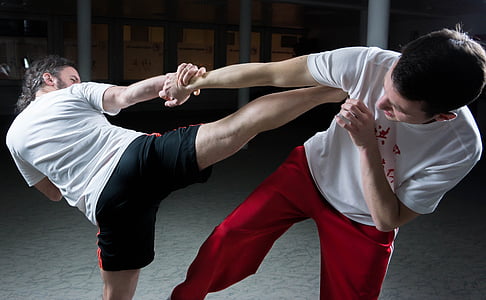History Of Karate - [Karate]
Karate (空手) (/kəˈrɑːti/; Japanese pronunciation: [kaɾate] is a martial art developed in the Ryukyu Kingdom. It developed from the indigenous Ryukyuan martial arts.karate is less than 200 years old however it has roots that date back thousands of years..Karate is now predominantly a hanging art the usage of punching, kicking, knee moves, elbow strikes and open-hand techniques including knife-hands, spear-arms and palm-heel moves. Historically, and in some modern styles, grappling, throws, joint locks, restraints and vital-factor moves also are taughtHistory Of Karate - [Another view]
According to historic Okinawan legend, Karate had its beginnings in India with a Buddhist monk named Daruma. Tradition says that Daruma traveled throughout the Himalayan Mountains from India to the Shaolin Temple in Honan Province of China. There he started teaching the other clergymen his philosophies of physical and intellectual conditioning. Legend has it that his teachings included physical games for retaining physical energy and self defense.This same monk known as Bodhidharma in India and as Ta Mo in China, is credited with founding the faculty of Buddhist philosophy known as "Ch´an" in China and as "Zen" in Japan.The Okinawans agree with that the artwork known as Karate today got here from those authentic teachings of Daruma through an Okinawan who visited or lived for a while in China on the Shaolin Temple. Whether or now not that is true, it is obvious that there are similarities inside the Okinawan art of Karate and the language and martial arts of China.Further, we must expect that the Karate of Okinawa developed from trial and error of fighting stories into a exceptional and specific martial art. |
| Karate |
Karate History and its Development into a World Martial Art
At the flip of the 20 th century, Anko Itosu won permission to stop the shroud of secrecy for individuals who wanted to examine martial arts and started out coaching Te in Okinawan schools. This led to similarly enlargement via certainly one of Itosu’s students, Sensei Gichin Funakoshi, who added the art to Japan in 1922.
Funakoshi made many changes to the artwork to make it extra accessible to the Japanese including converting the call and karate as we comprehend it these days was born. Towards the quit of his life, Funakoshi become instrumental in forming the Japanese Karate Association (JKA) which set about making karate a world martial artwork by sending out its great teachers to teach it everywhere in the globe.
Today, karate is practiced by way of tens of millions of people right the world over and despite the fact that the traces are often blurred between karate history data and exagerations or legends, the contribution made by the vintage Okinawan masters and those that accompanied them should now not be forgotten.
 |
| Karate fighting |
Practice
Traditional karate places emphasis on self-development (budō).[26] Modern Japanese fashion education emphasizes the psychological elements included into a proper kokoro (attitude) which include perseverance, fearlessness, virtue, and leadership skills. Sport karate places emphasis on exercise and competition. Weapons are an important training hobby in some types of karate.
- Kihon
- Kata
- Kumite
- Dojo Kun
- Conditioning
- Sport


No comments:
Post a Comment